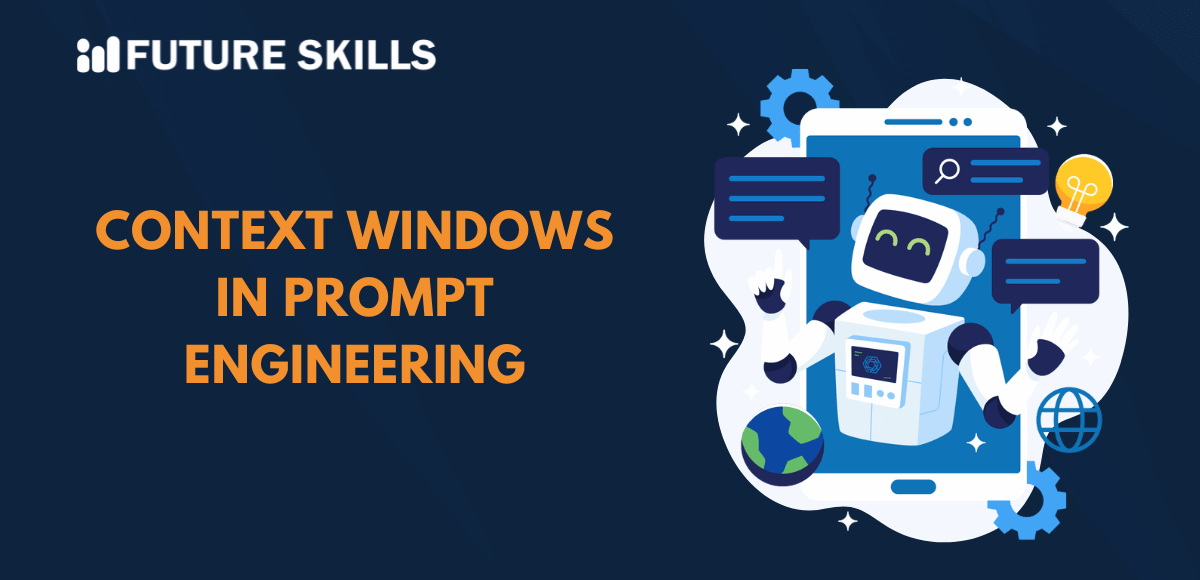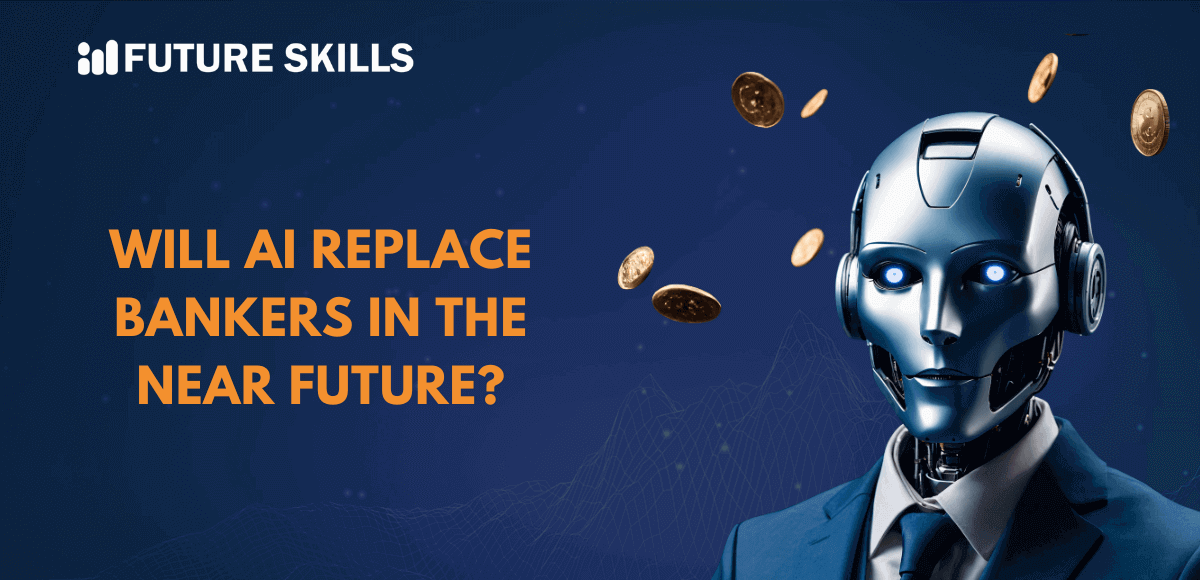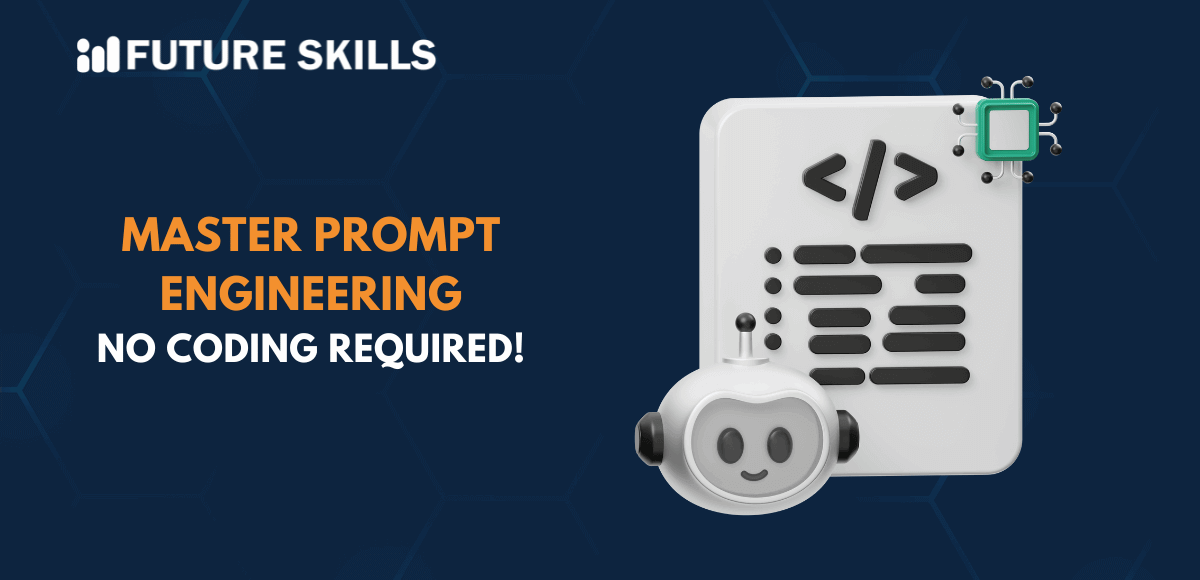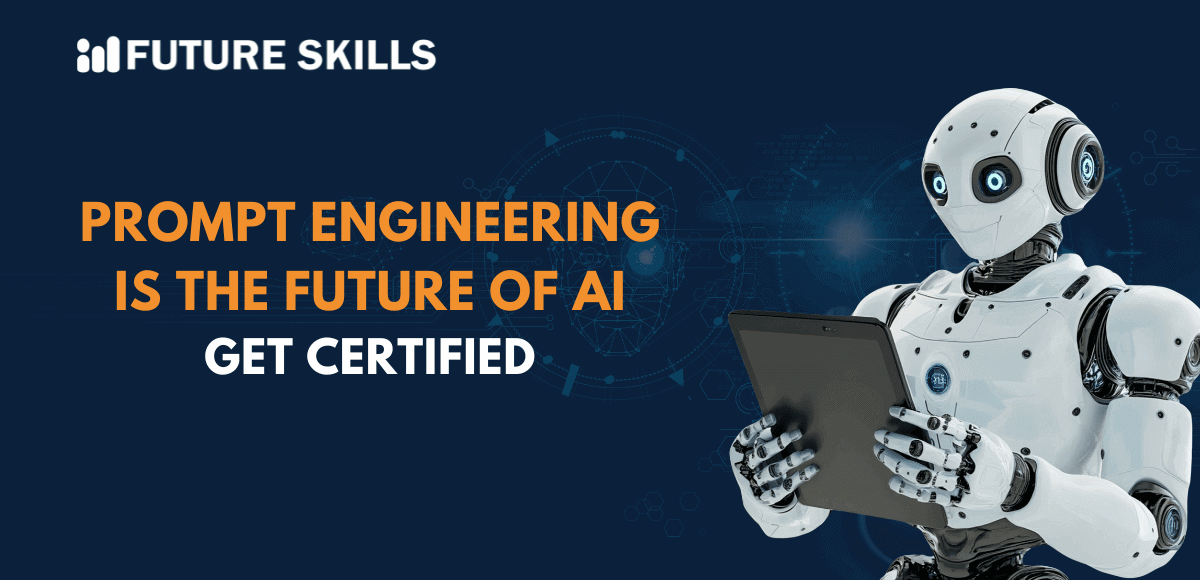Context windows are an integral part of AI models. They are commonly called the short-term memory component. Context windows in prompt engineering basically define the maximum amount of tokens or texts that can be processed at a time for generating a response.
In the context of prompt engineering, the effective management of the context window is a must. It can ensure that the Artificial Intelligence model is able to receive the relevant information while maintaining coherence in conversation. It can also impact the accuracy of the generated information. Moreover, context windows can serve as a catalyst and ensure the generation of contextually accurate outputs or responses.
Become a job-ready AI professional with our accredited Prompt Engineering Certification Program. Learn the fundamentals and advanced techniques of prompt engineering in just four weeks.
What is a Context Window?
In the realm of large language models (LLMs), a context window refers to the temporary memory. As the latest LLMs grow in their capability, the context window in which the information and instructions exist impacts the quality as well as relevance of the AI output.
Now it is important for you to answer the question: What is a context window in prompt engineering? A context window is the short-term memory that encompasses everything, starting from the system instructions, the input given by the users, and the prior conversational history. It also includes the embedded metadata of the prompt. Thus, a context window is the text the model can remember during one interaction.
How Context Windows Transform Prompt Engineering?
In 2025, the role of context windows in the realm of prompt engineering has become one of the most discussed themes. Recent advances in the form of OpenAI’s GPT 4.1 are able to support up to one million tokens of context. As a result, it allows AI models to efficiently handle entire databases or lengthy research transcripts in a single query.
The expansion that has been taking place in the context window in prompt engineering is certainly reshaping the prompt engineering domain. Today, you can observe a paradigm shift in prompt engineering strategies, thanks to the expanding capability of context windows. After knowing what is a context window in prompt engineering? You must familiarize yourself with some of the real-world examples.
A common example in the customer service setting is “Write an email to an irritated customer whose subscription got auto-renewed without clear notice. Use a polite tone in the mail. Explain the policy and offer a refund option in the email.” This is one of the contextual prompt examples you can use to ask an LLM to generate a tailored email.
Another example is “Think from the perspective of a high school biology teacher and explain the ‘photosynthesis’ process in simple terms with an analogy and include a multiple-choice question for practice. This is one of the many Contextual prompt examples that highlight the relevance of the context window in prompt engineering.’
Enroll now in the AI for Business Course to understand the role and benefits of AI in business and the integration of AI in business.
State of Long Context Windows
Gone are the days of short context windows. Today, context windows are expanding like never before. Long Context Windows are undoubtedly increasing in their capability at present. Thus, modern AI models are able to support hundreds or thousands of tokens or texts.
Thanks to the emergence of long context windows in the AI realm, the sophisticated applications of AI models are possible. You can leverage the context window in prompt engineering for diverse purposes such as evaluating large documents or maintaining lengthy conversations.
However, it is essential to bear in mind that long context windows come with their fair share of challenges. A common challenge revolves around high computational costs. Similarly, the response time may become somewhat slower for users because of large context windows. Moreover, it gives rise to the concern relating to the possible loss of information. The future of long context windows can become more promising if developers can address the challenges and limitations.
Prompt Engineering Techniques for Long Context Windows
In order to engineer prompts for long context windows, it is imperative to focus on appropriate prompt engineering techniques. The right technique can certainly act as a catalyst and help you to leverage AI models to manage large volumes of data in an efficient and effective way. Some of the top prompt engineering techniques for long context windows are:
-
Context Compression
As the LLM context window gets expanded, a key challenge is not just about how much data they can handle, but also how efficiently that data is represented. This is when context compression comes into the picture.
Context Compression refers to the practice of decreasing the size of the input text while making sure that its meaning is preserved. As a result, your objective should be to put in more relevant information into the LLM context window. Some of the techniques that engineers adopt for compressing context include summarizing layers and hierarchical context.
Summarizing layers involves using short as well as structured summaries instead of using full documents. Similarly, Hierarchical context involves prioritizing information that is relevant or important. You can also try these techniques for context compression purposes.
-
Retrieval-Augmented Generation
Retrieval-Augmented Generation, or RAG, refers to a technique where LLM models get enhanced by linking them to external knowledge bases. With the expansion of the prompt engineering context window, this serves as an ideal strategy that can be adopted to ensure that relevant and updated output is generated by the model.
It is certainly a useful approach that you can adopt in order to allow LLMs to generate more precise and context-aware responses for users. The RAG technique can make sure that even though the prompt engineering context window expands, there is no compromise in terms of the quality and accuracy of the response.
-
Scratchpads
For deriving optimum value from expanding context windows in LLMs, you can consider using scratchpads. Scratchpads refer to external memory used to store intermediate thoughts or key decisions within the context. These elements can be pulled into the prompt in order to improve the level of accuracy. Moreover, it can help the AI model showcase its work.
While using AI models, you can consider using a digital tool for keeping temporary notes. It can act as a temporary storage or an invisible workspace that can help you while using an LLM. This is surely a smart and strategic technique of managing data beyond the native context window.
Become a certified ChatGPT expert and learn how to utilize the potential of ChatGPT that will open new career paths for you. Enroll in Certified ChatGPT Professional (CCGP)™ Certification.
Final Words
In the prevailing era context, windows are expanding at an unprecedented pace. If you are keen on deriving maximum value from their expanding capability, you need to be familiar with their role in prompt engineering. The evolution of context windows in LLMs is certainly redefining how prompt engineering delivers value today in the Artificial Intelligence landscape.
However, you have to keep in mind that the size of the context window alone does not matter. There exist other important factors as well, such as response accuracy and computational cost. Similarly, factors such as trustworthiness as well as efficiency are of high importance that you cannot ignore. You need to apply robust prompt engineering techniques to make the most of the high capability of context windows of LLM models. Pursuing a prompt engineering certification can further enhance your ability to design effective prompts and leverage these models optimally.






